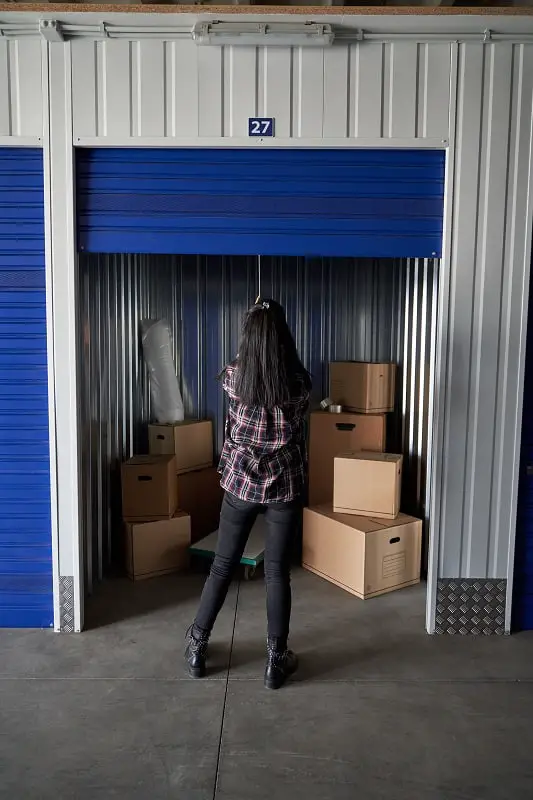Do you have mice in your storage unit? Or are you preparing to lease a new storage space and want to take the necessary precautions to keep the mice out? Either way, we have you covered.
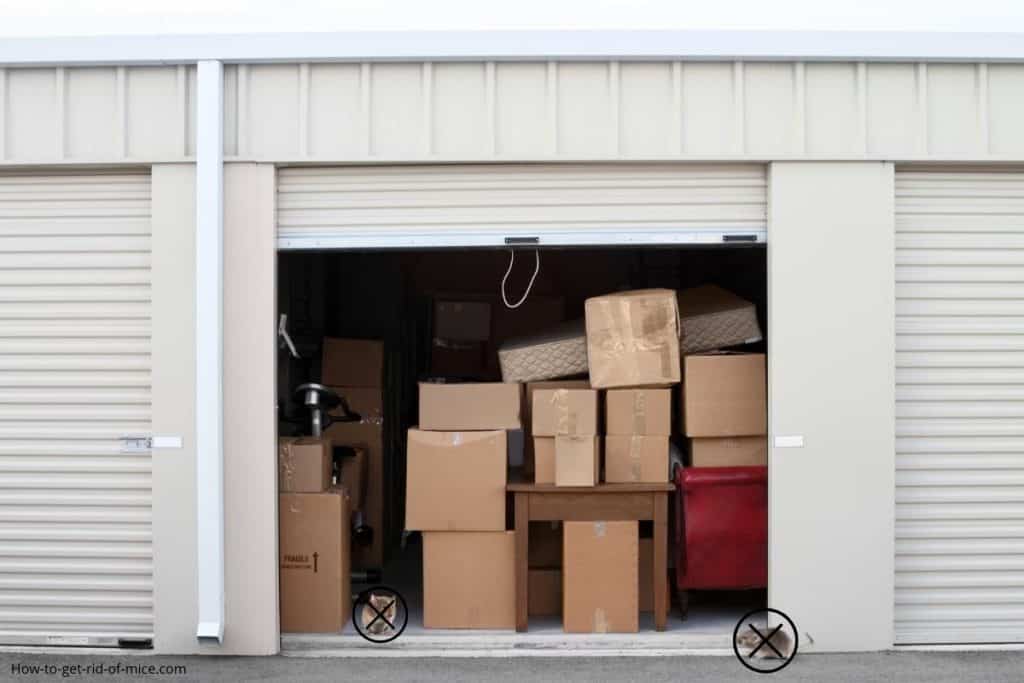
A storage unit is supposed to protect your household items, and for the most part, it does. But let’s face facts. Sometimes storage units have vulnerabilities.
If you’ve found mice in your unit, you know how much damage they can do.
In this article, I am going to give you some recommendations for how to keep mice out of your long-term storage unit.
But first, I want to tell you a little bit more about my experiences with rodents (and other pests) in my own storage units. And hopefully, you’ll be able to avoid the same type of problems.
Table of Contents
My History with Storage Units
I have kept a storage unit for my job for about eight years. I use it to hold my extra inventory and supplies until they are ready to be shipped.
I visit my unit several times a month to fill orders. Since I am in and out of the storage buildings all the time, I see what some of the other occasional users may not.
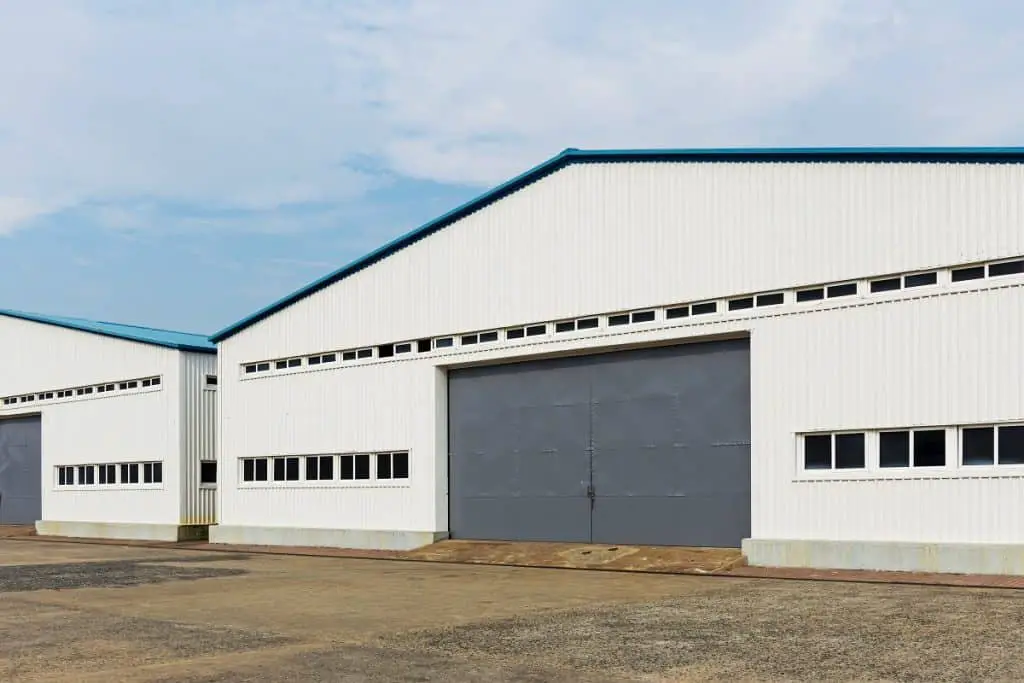
I’ve also lived in a few different places during that time, so have used four different facilities.
During one of my moves, I had to store the contents of my entire house in one of the locations. So I packed up all of my worldly possessions and put them in a few of the larger units for eight months. That experience gave me a whole new perspective on the things that can go wrong.
Most of the facilities I’ve used have been pretty good, with only occasional problems. One was near perfect, but another was a complete nightmare. Unfortunately, that was when I had all of my personal belongings stored.
I have encountered mice, crickets, spiders, moths, and lots of other critters over the years. Most places will have the occasional pest problem, it is to be expected. But there is a lot you can do to make sure they don’t get inside.
And hopefully, now I can help other people avoid the types of pest problems that go along with long-term storage.
How To Prevent Mice From Getting Inside Your Storage Unit
1. Choosing The Right Facility & Unit
One of the key ways to keep mice out of your storage unit is to select a good facility and location. Before you sign on the dotted line, you’ll want to select a location that is the least likely to have a rodent problem.
The Physical Location
The surrounding areas of the storage company are really important. Many storage facilities are in remote or more rural locations. If there is a huge field around the facility, buyer beware.

Mice and insects live in those fields. If there is a wooded area next door, that is another great breeding ground for mice and other rodents. They will be more than happy to come inside once the weather turns cold.
My nightmare storage unit experience was in one of those locations. It was surrounded by huge fields and trees. I just didn’t realize how bad the location was. Now I know better.
If the building is in a city or suburban area with busy roads and parking lots, the overall rodent population will be much smaller. This means there will be fewer mice that might try to get inside.
At a minimum, make sure the outside of the building is surrounded by concrete. The further away large grassy areas are, the better off you’ll be.
Choosing Your Unit
Surprisingly, the unit you choose inside the building is really important.
When you pick your unit, select an interior location, that is away from the outside door.
A location right next to the exterior door is super convenient for moving things in & out of the building. However, it is also the first place the mice will go.
The exterior doors are opened all the time. They don’t always close securely, and people prop them open all the time. This is such an easy access point for mice.
Just take a look at the corners on either side of the door. You will probably see a black box. That is a rodent trap. The owner or manager knows to set traps at the point of entry. You don’t want to be right next to it.
Inspect The Door and Floor
Most storage units have a pulldown garage-style door. Close the door and make sure the rubber on the bottom of the door is flush against the concrete. The rubber can crack or get damaged. If your unit’s door does not seal completely, the mice (and insects) will walk right in.
And when you close it, make sure the little rope used to pull down the door is clear of the rubber seal. The only time I had a mouse inside my current unit was when the rope got under the rubber seal. It left just enough of a gap for a mouse to get inside.
Next, inspect the interior as best you can for gaps and cracks.
- Are the corners completely sealed?
- What about the wall between the unit next to you?
Only if you are satisfied that nothing is likely to get in should you go ahead and pay for that unit and move your stuff in.
2. Protect Your Furniture For Long Term Storage
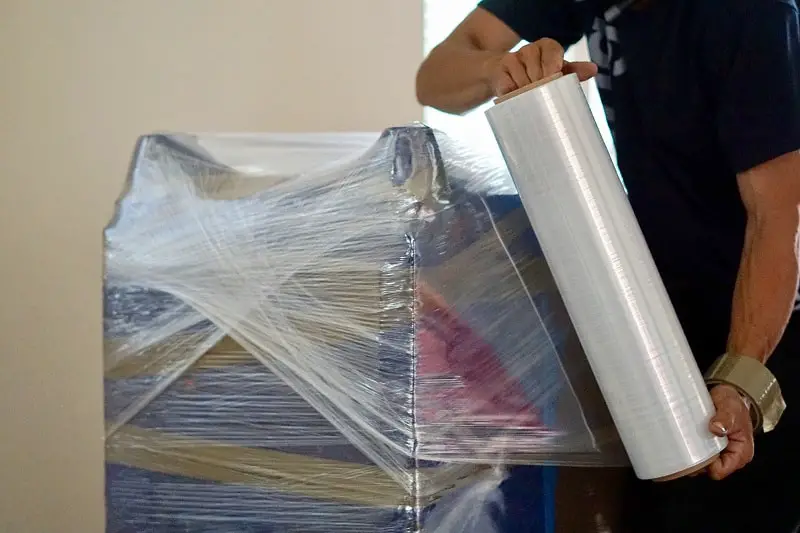
Covering all your furnishings in plastic wrap can help to provide the necessary protection against rodents. This is particularly important for upholstered furniture.
Most moving companies will do this for you. If not, you can buy rolls of plastic wrap on Amazon or other online retailers.
The brand I use is Stretch Wrap from Totalpack. One of these rollers will cover an oversized chair and ottoman or probably a loveseat. The handle makes it easy to wrap.
If you have a favorite couch or chair, I recommend adding extra moving blankets under the plastic. The same goes for mattresses. The blanket gives you an added layer of protection. No one wants to find mouse poop in their favorite chair or inside their mattress!
And whenever possible, don’t put soft items on the ground. These are prime targets. Raise them up on a table, or place them on top of plastic containers.
3. How to Keep Mice Out of Storage Boxes
Rodents and insects are amazingly good at getting into the smallest openings. For that reason, you should also take the additional precautions below to protect your items.
Packing Your Belongings Safely
Cardboard is the most common packing material, but it is not best to keep mice out. They can easily chew right through the cardboard. And it makes an excellent nesting material for them too.
A better alternative is heavy-duty sealable plastic bins. I like the Sterlite see-through containers. They stack nicely, and the handles make them easy to carry.
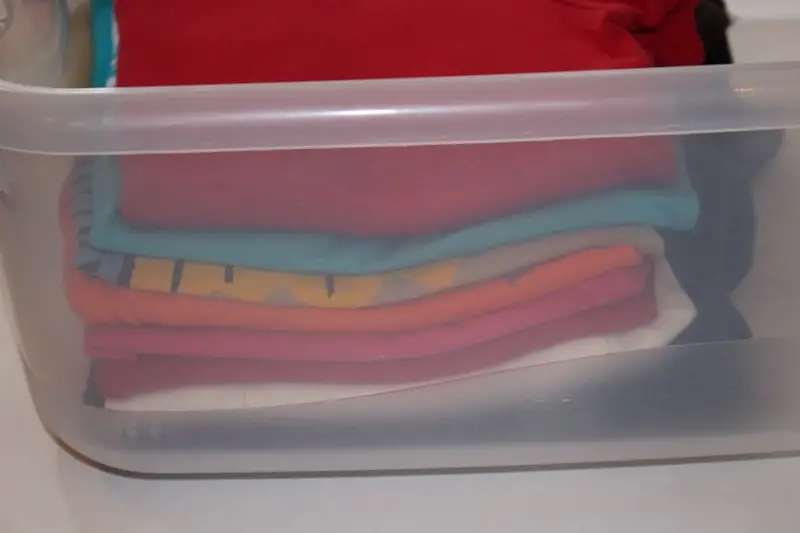
No matter the brand you choose, try to go with really sturdy plastic. Plastic is not entirely rodent-proof, and thin or brittle plastic containers might be susceptible to damage.
If it’s not possible to pack everything in plastic storage containers, that’s ok. I still use cardboard boxes for many things. But try to prioritize your personal or softer items for the plastic bins, such as clothes, sheets, and pillows.
How to Keep Mice Out of Cardboard Boxes
It is likely you will still have cardboard boxes, that is not a problem. There are a few extra steps you can take to keep your items safe.
I like to wrap my items in plastic bags first, then place them in the boxes.
This does a few things:
- It keeps out moisture if your boxes get wet or, heaven forbid, moldy.
- It keeps normal household smells that could attract mice in the bag.
- Gives you a second line of defense in case a box becomes compromised.
An inexpensive way to wrap your items in plastic is to use trash bags. You can choose the size and weight based on the items you are storing. Just make sure to select unscented bags.
Next up is the tape. I like to tape all the way to the edge and on each side, not just the flaps to close the box. Do not leave any openings that rats can easily bite or crawl into.
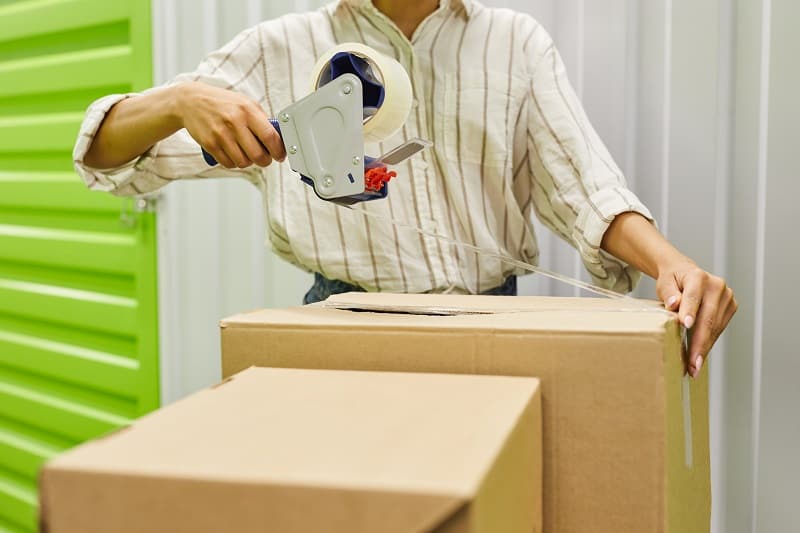
And as a final step, don’t place cardboard boxes directly on the group. If any moisture gets inside the building, the boxes will deteriorate quickly. Raise everything up on a pallet or some other hard platform.
What To Avoid Keeping In Storage Units
Obviously, you cannot avoid packing some types of items that mice like in your unit. Clothes, bedding, pillows, books, and even boxes themselves all can make useful nesting materials for mice. So there is no getting around that.
But you can at least try to avoid storing something that will really pique the interest of mice, and that is food.
That might seem straightforward, but some mistakes are easy to make. For example, I stored some spices and garden seeds without even thinking about it.
Unfortunately for me, these are exactly the kinds of things rodents love to eat.
Another thing to do is carefully check your dishes and utensils before putting them in storage. Make sure they are really, really clean. If there is any food residue on them at all, that may draw rodents to your unit.
And it doesn’t hurt to wrap a plastic bag around your dishes or utensils just in case.
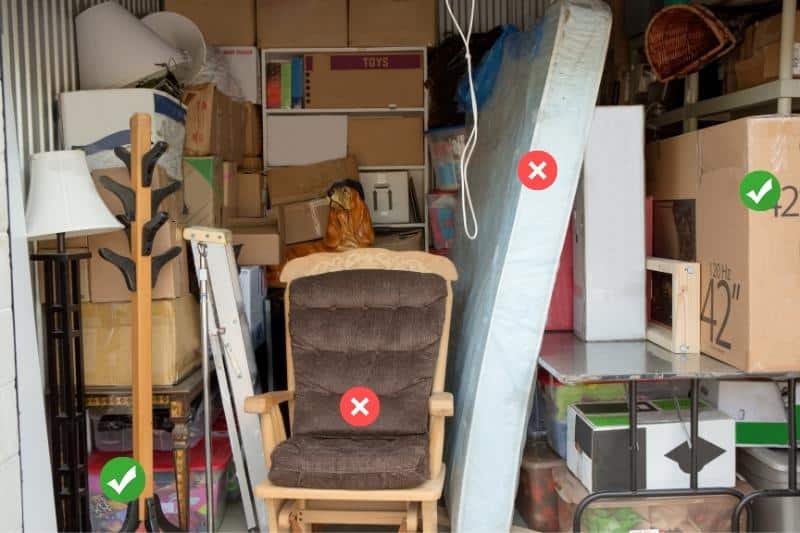
The photo above shows a packed storage unit with both good and bad packing practices. Can you spot what they did right and wrong?
4. Use Natural Deterrents Inside
Preventative methods are always preferred to deter mice, rats, and insects from spending time in your storage unit.
The less appealing you can make the environment inside the unit, the less likely it is that they will want to settle in and chomp on what they find there.
In smaller enclosed areas like storage units, rodent repellents work very well.
One option is Grandpa Gus’s Extra Strength Mouse Repellent Pouches. These are small pouches containing peppermint and cinnamon oils in a concentrated form. The oils irritate the nasal passageways of the mice to keep them away.
A single pouch protects a space up to 50 square feet. That is more than sufficient for even a large storage unit.
Cedar blocks are another option if you want to keep it natural. You can put these in the corners of your unit or even inside the boxes.
5. Setting Traps In Your Unit
If you follow all the advice above, you may not need to set traps. And hopefully, this is the case. If not, here are two options for using mouse traps.
Glue Traps
While I don’t love glue traps, I do use them in my storage units. I use them more for insects than mice, but they will work for both.
Almost every storage will have a few spiders or crickets. It is practically unavoidable. The glue traps will stop these insects from getting too far in your unit. And if a mouse comes by, the glue trap should stop him as well.
Place a glue trap in each corner of your unit. You can make the triangle tent or I sometimes just lay them flat. (A trick I learned from an exterminator). Just be careful where you place them because they will stick to anything & are really hard to get off!
Baited Traps
Only set traps with bait if you absolutely know you have mice inside your storage unit. Otherwise, the bait could attract more problems than it solves.
You can choose from a variety of traps to get rid of the mice. Since you will not be checking your unit often, you should set lethal traps. Humane traps are a no-go since the rodents would be stuck in them and would starve to death slowly, a grim fate.
But if you have found droppings or other evidence of mice, then electric traps or bait stations are both good choices. See our article on the best electric mouse traps to get our recommended brands.
If you want to add both lethal traps & glue traps, I would place the glue traps in front & the electric traps in the back.
Be Proactive
One last recommendation is to check your storage unit as often as you can.
You should do this not only to maintain your traps and deterrents but also just so you are aware if there is a problem.
Unfortunately, based on my experience, the building owner may not notify you if there is a problem.
I have rented a storage unit for over 8 years, and not once has management called to tell me they caught a few mice or noticed a larger than the normal number of crickets.
It is up to you to be proactive and inspect your belongings. Depending on how bad it is, you may need to take a more aggressive approach or move your things to another unit.
Summary
Now you have some recommendations for how to keep mice out of your storage unit.
Packing your items with diligence will take extra time and effort. But when those steps save you from hundreds or even thousands of dollars worth of damages and help to keep priceless possessions safe, you will be glad you put in the extra effort.
Take it from me—I learned the hard way. But you don’t have to!
